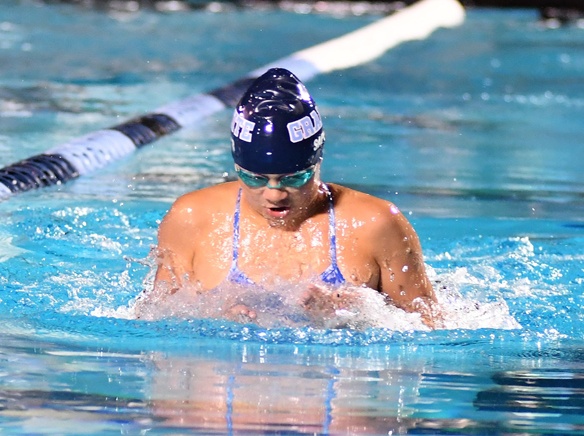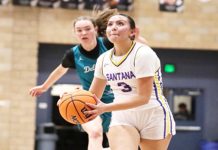
Grossmont Conference schools are set to take the plunge into the water Feb. 26 when the 2021 swim season is scheduled to begin after last season was cut short following the declaration of the coronavirus pandemic.
In Grossmont Hills League openers, Valhalla will host Steele Canyon, Granite Hills will host West Hills while Helix will host Grossmont.
In Grossmont Valley League openers, El Cajon Valley will host Mount Miguel and Monte Vista will host Santana.
There are major differences as the sport resumes after nearly a year, including some schools hosting virtual meets in which swimmers compete at their own schools and results are compiled by combining times.
All Grossmont Hills League teams will host junior varsity meets virtually.
Granite Hills is scheduled to host West Hills in an in-person meet to start the season.
Granite Hills head coach Cathy Elgas said with last season being curtailed after just one to two meets that coaches are still catching up on the competition.
“All teams have a couple good swimmers,” Elgas said. “I just know Granite will do well; we have top swimmers and depth. We have the same returning top swimmers as we had last year.”
The top three returners on the girls team include Erin Kluge, Izzy Cox and Rachel Sapper along with a talented group of freshmen.
Top boys include returners Aidan Keane and Riley Thompson and quick freshman Braden Felio.
“Aidan is a sophomore on track to break a couple of school records this year,” Elgas noted. Safety net
Safety protocols in place, as issued by the San Diego Section in conjunction with national, state and local health officials, are numerous and strict and apply to both meets and practices.
- All coaches, student-athletes and game officials will be screened prior to each practice of contest for signs/symptoms of COVID-19 prior to participating.
- Teams traveling for a contest should screen their student-athletes prior to boarding transportation to the event and again upon arrival at the event site. The home site is not responsible for screen visiting athletes and coaches.
- Any person with positive symptoms should not be allowed to participate, should self-isolate and contact their primary care provider or other health-care professional.
Safety protocols issued by the section apply to all Season 1 sports, not just swimming.
Hygiene protocols, when practical, should include handwashing/sanitization stations available for all student-athletes, coaches, officials and spectators at all times.
Frequently used items and surfaces (chairs, furniture in meeting rooms, weight room equipment, bathrooms and athletic training room tables) are to be disinfected on a daily basis.
Everyone entering campus sites must use face coverings at all times.
Additionally, all student-athletes, coaches, officials and spectators must bring their own water bottles. Water bottles must not be shared; food should not be shared.
Safety protocols extend even after an event is completed.
Specifically, in regard to swimming and diving, student-athletes should arrive at facilities prepared for practice in proper attire with minimal personal belongings as locker room storage may be restricted. Athletes should plan on leaving the facility in their suits, showering and washing clothing upon arrival at home.
All individuals not actively participating in athletic activities must wear face coverings. This includes coaches, athletes and volunteers.
All individuals should be socially distanced to the furthest extent possible.
Athletes should be spaced out in the pool to ensure social distancing at all times. It is recommended that no more than four athletes share a lane at a time, alternating two athletes at one end. There should never be more than two athletes stopped at the wall in the same lane. This applies during practice, meet warmups and during a meet.
Those in attendance on the pool deck should be limited to essential volunteers, main coaches and meet participants unless other arrangements have been made that abide by all school, district, CIFSDS and facility guidelines.
It is suggested that teams use athletes not participating in the meet as timers to limit the exposure to individuals not regularly around the team.
Because of social distancing protocols, celebrating will take on a twist. No high-fives and group cheers are allowed between participants.












